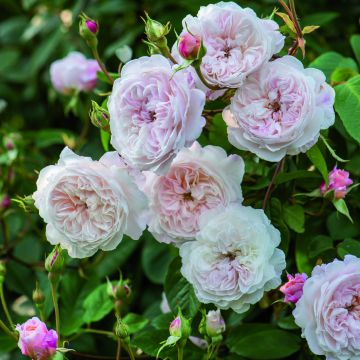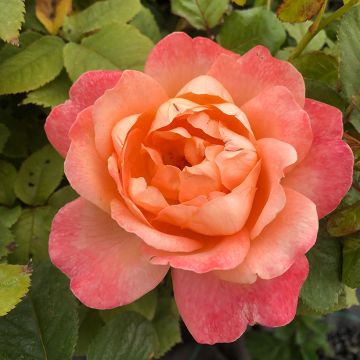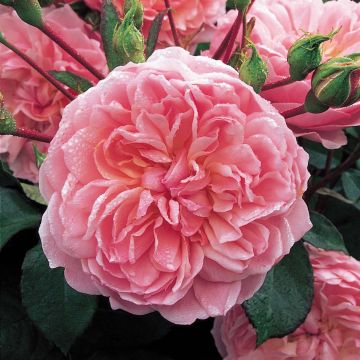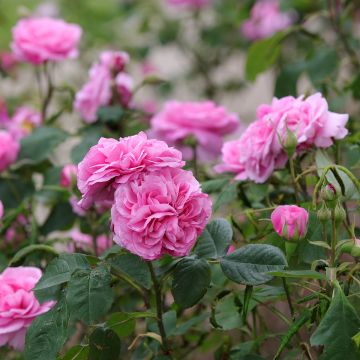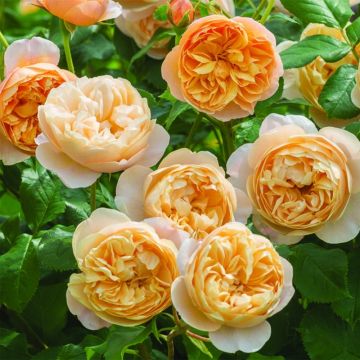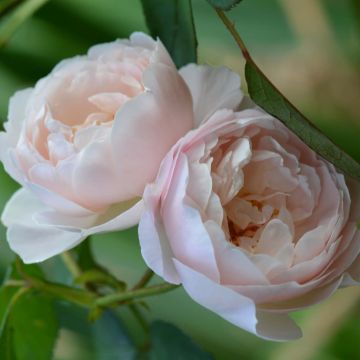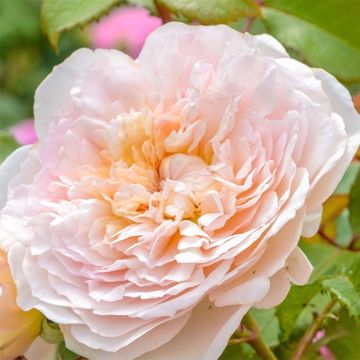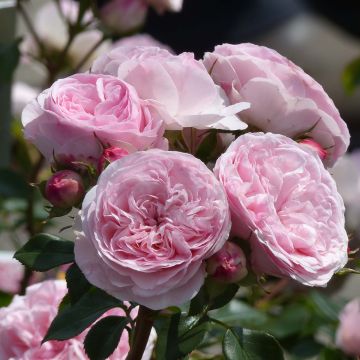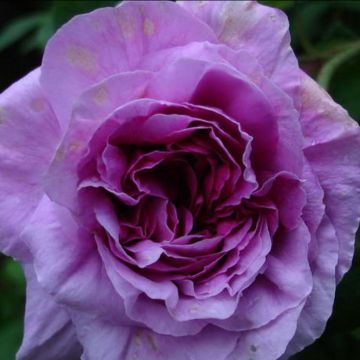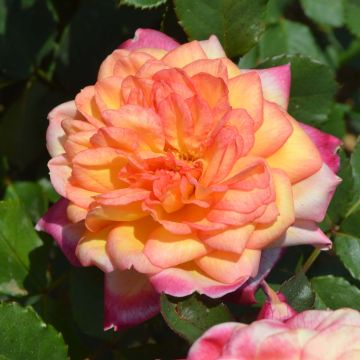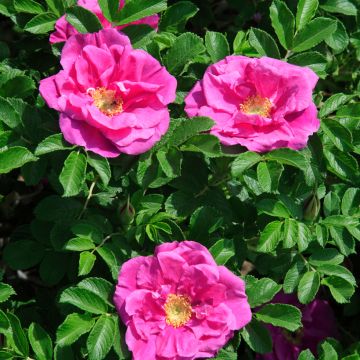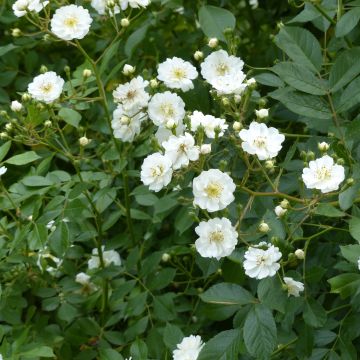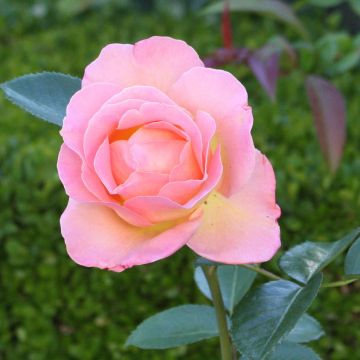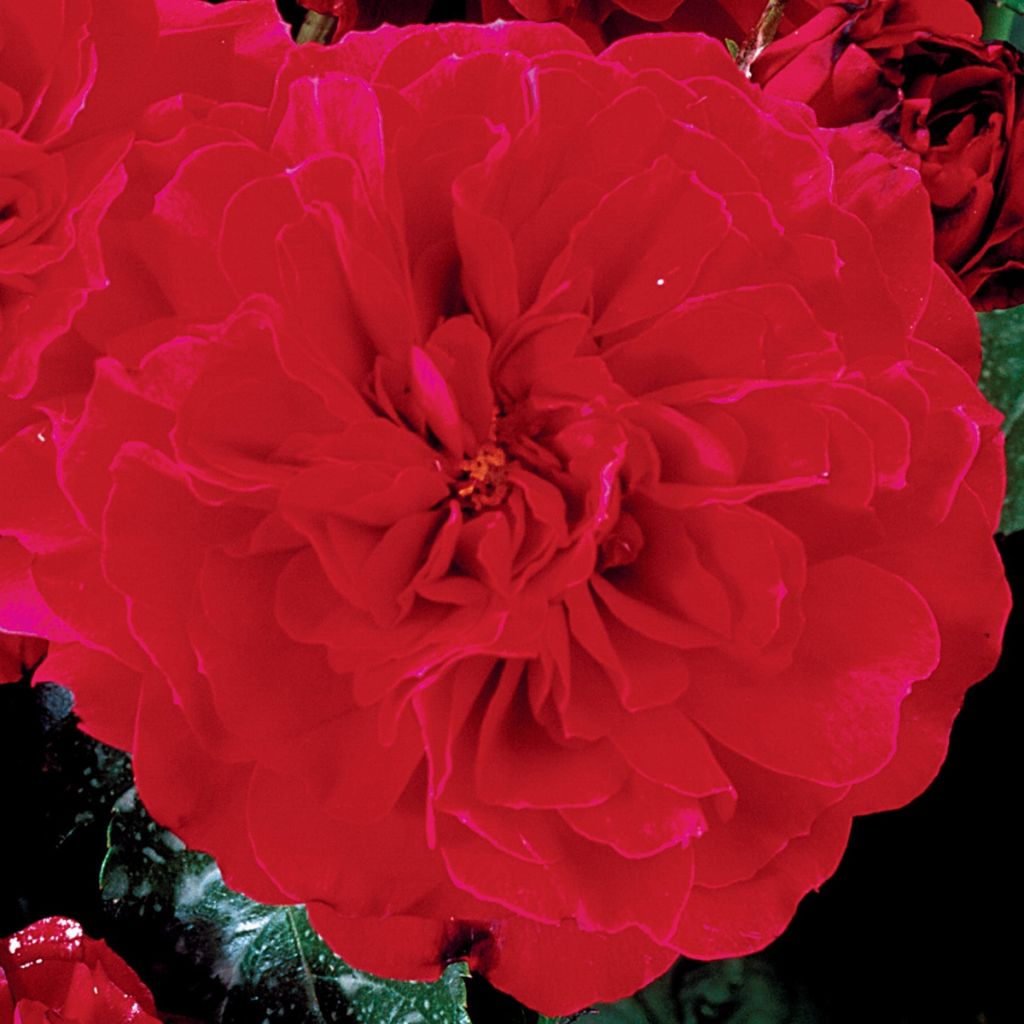

Rosier anglais English Legend Hamlet
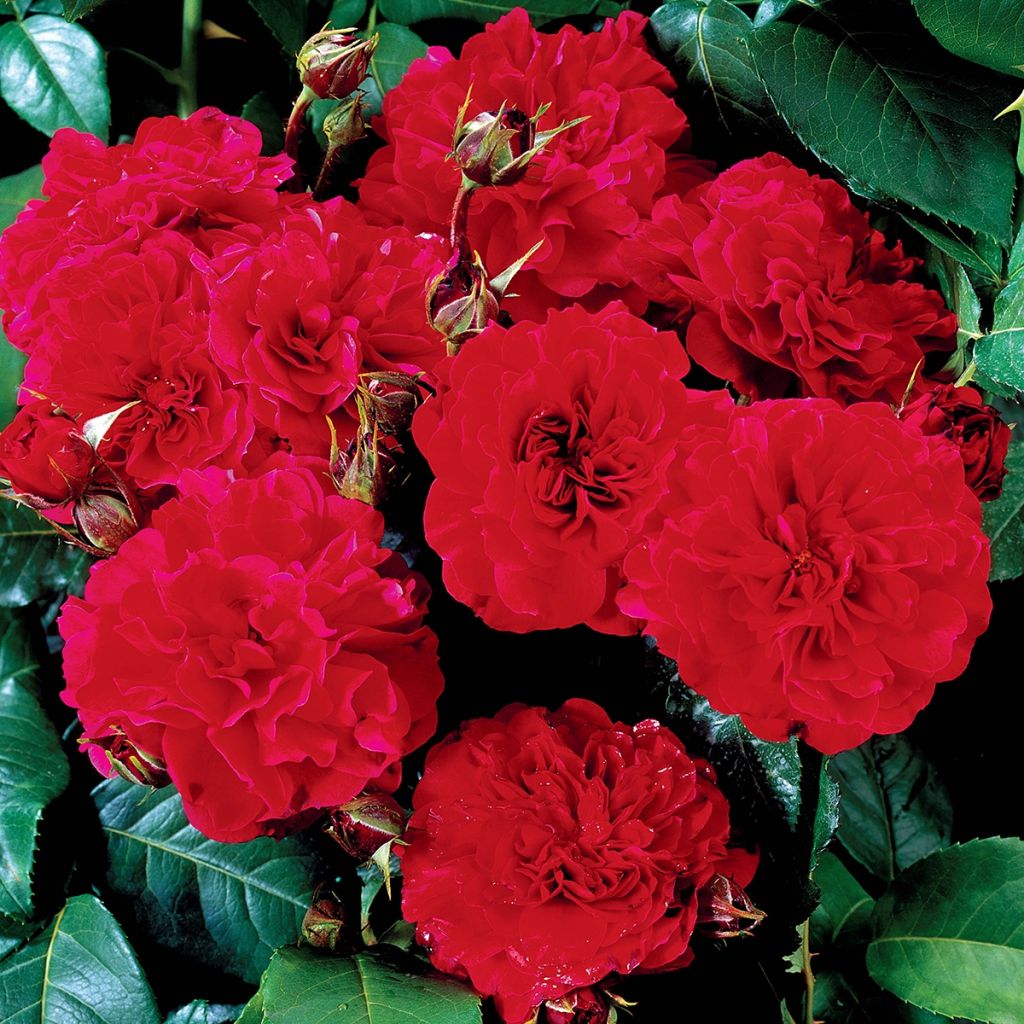

Rosier anglais English Legend Hamlet
Rosa x floribunda Hamlet
Rosa x floribunda Hamlet Harfervour
Rose [Hamlet]
This item cannot be shipped to the selected country
Delivery charge from €5.90
Delivery charge from €5.90
Delivery to Corse prohibited
More information
Schedule delivery date,
and select date in basket
This plant carries a 24 months recovery warranty
More information
We guarantee the quality of our plants for a full growing cycle, and will replace at our expense any plant that fails to recover under normal climatic and planting conditions.
From €5.90 for pickup delivery and €6.90 for home delivery
Express home delivery from €8.90.
From €5.90 for pickup delivery and €6.90 for home delivery
Express home delivery from €8.90.
Delivery to Corse prohibited: UE law prohibits the import of this plant from mainland France to Corse as part of the fight against Xylella fastidiosa. Please accept our sincere apologies.
More information
Does this plant fit my garden?
Set up your Plantfit profile →
Description
Rosa Hamlet is part of a series of modern hybrids called English Legend, which brings together varieties created in England in the 1990s by the famous breeder Robert Harkness. With their repeat-flowering and delicate scent, these slightly old-fashioned plants express all the charm of English roses. This particular rose celebrates Shakespeare's tragedy. It has a low-growing habit and disease-resistant foliage. It produces clusters of double, pompom-like flowers with a vibrant red-pink colour and a spicy fragrance that contains hints of wood. It is a highly floriferous variety from spring to the first frosts. Its dazzling flowering will be enhanced by light perennials and grasses.
Rosa Hamlet, a floribunda type, is characterised by a low, bushy, and well-branched habit. This bush reaches a height of about 60 to 70cm (24 to 28in) with a spread of 60cm (24in). Its thorny stems bear reddish young shoots that unfold into dark green, shiny leaves, divided into 5 finely toothed leaflets. The foliage is disease-resistant under good growing conditions. Its flowering is long and abundant, and it repeats in successive waves from June to October if the soil remains moist. The flowers open in small clusters of 3 to 5 units. They are 7 to 8cm (3in) wide, globular in shape, and composed of 25 to 30 petals arranged in a pompom. They are an extremely bright red with pink undertones, and their spicy fragrance is of medium intensity. It is at its peak at noon and in the evening, after a hot and sunny day.
Floribunda roses can be used to create beautiful small hedges, planted mixed at the edge of a patio, or in borders with modest-sized shrubs. They can be combined with abelias, Mexican orange trees, or caryopteris, for example. They are good companions for phlox paniculata and tall gypsophila. Hamlet will be highlighted when planted in groups of 3 plants, forming an extremely bright bush. It can be surrounded by nepetas and perennial or shrubby salvias with blue, mauve, or white flowers. It can also be paired with the silvery foliage of artemisias, chamomiles, yarrows, or small light grasses like stipa (barbata, pennata, tenuifolia). This very hardy rose requires little maintenance. It will thrive in full sun or partial shade, where it will delight all gardeners.
Report an error about the product description
Plant habit
Flowering
Foliage
Botanical data
Rosa
x floribunda
Hamlet Harfervour
Rosaceae
Rose [Hamlet]
Cultivar or hybrid
Rosa multiflora (Wrapped bare root)
Other David Austin Roses
Planting and care
Plant in a sunny location. English roses are tolerant, but do not like excessive limestone. They will adapt to any garden as long as the soil is well worked, not too heavy, and sufficiently rich. To plant your rose, work the soil by crumbling it and add fertiliser to the bottom of the planting hole (dried blood or dehydrated horn, for example). Water generously after planting to remove any air pockets. Water regularly for a few weeks to facilitate rooting. Provide your rose with special rose fertiliser that stimulates flowering.
Pruning is essential for flowering. Shorten the branches to two or three buds above the ground in spring, choosing an outward-facing bud for a more elegant habit. Remove dead wood and unsightly branches. Pruning should be done at an angle above a bud.
Regularly remove faded flowers to encourage new blooms.
Planting period
Intended location
Care
-
, onOrder confirmed
Reply from on Promesse de fleurs
Fragrant Roses
Haven't found what you were looking for?
Hardiness is the lowest winter temperature a plant can endure without suffering serious damage or even dying. However, hardiness is affected by location (a sheltered area, such as a patio), protection (winter cover) and soil type (hardiness is improved by well-drained soil).

Photo Sharing Terms & Conditions
In order to encourage gardeners to interact and share their experiences, Promesse de fleurs offers various media enabling content to be uploaded onto its Site - in particular via the ‘Photo sharing’ module.
The User agrees to refrain from:
- Posting any content that is illegal, prejudicial, insulting, racist, inciteful to hatred, revisionist, contrary to public decency, that infringes on privacy or on the privacy rights of third parties, in particular the publicity rights of persons and goods, intellectual property rights, or the right to privacy.
- Submitting content on behalf of a third party;
- Impersonate the identity of a third party and/or publish any personal information about a third party;
In general, the User undertakes to refrain from any unethical behaviour.
All Content (in particular text, comments, files, images, photos, videos, creative works, etc.), which may be subject to property or intellectual property rights, image or other private rights, shall remain the property of the User, subject to the limited rights granted by the terms of the licence granted by Promesse de fleurs as stated below. Users are at liberty to publish or not to publish such Content on the Site, notably via the ‘Photo Sharing’ facility, and accept that this Content shall be made public and freely accessible, notably on the Internet.
Users further acknowledge, undertake to have ,and guarantee that they hold all necessary rights and permissions to publish such material on the Site, in particular with regard to the legislation in force pertaining to any privacy, property, intellectual property, image, or contractual rights, or rights of any other nature. By publishing such Content on the Site, Users acknowledge accepting full liability as publishers of the Content within the meaning of the law, and grant Promesse de fleurs, free of charge, an inclusive, worldwide licence for the said Content for the entire duration of its publication, including all reproduction, representation, up/downloading, displaying, performing, transmission, and storage rights.
Users also grant permission for their name to be linked to the Content and accept that this link may not always be made available.
By engaging in posting material, Users consent to their Content becoming automatically accessible on the Internet, in particular on other sites and/or blogs and/or web pages of the Promesse de fleurs site, including in particular social pages and the Promesse de fleurs catalogue.
Users may secure the removal of entrusted content free of charge by issuing a simple request via our contact form.
The flowering period indicated on our website applies to countries and regions located in USDA zone 8 (France, the United Kingdom, Ireland, the Netherlands, etc.)
It will vary according to where you live:
- In zones 9 to 10 (Italy, Spain, Greece, etc.), flowering will occur about 2 to 4 weeks earlier.
- In zones 6 to 7 (Germany, Poland, Slovenia, and lower mountainous regions), flowering will be delayed by 2 to 3 weeks.
- In zone 5 (Central Europe, Scandinavia), blooming will be delayed by 3 to 5 weeks.
In temperate climates, pruning of spring-flowering shrubs (forsythia, spireas, etc.) should be done just after flowering.
Pruning of summer-flowering shrubs (Indian Lilac, Perovskia, etc.) can be done in winter or spring.
In cold regions as well as with frost-sensitive plants, avoid pruning too early when severe frosts may still occur.
The planting period indicated on our website applies to countries and regions located in USDA zone 8 (France, United Kingdom, Ireland, Netherlands).
It will vary according to where you live:
- In Mediterranean zones (Marseille, Madrid, Milan, etc.), autumn and winter are the best planting periods.
- In continental zones (Strasbourg, Munich, Vienna, etc.), delay planting by 2 to 3 weeks in spring and bring it forward by 2 to 4 weeks in autumn.
- In mountainous regions (the Alps, Pyrenees, Carpathians, etc.), it is best to plant in late spring (May-June) or late summer (August-September).
The harvesting period indicated on our website applies to countries and regions in USDA zone 8 (France, England, Ireland, the Netherlands).
In colder areas (Scandinavia, Poland, Austria...) fruit and vegetable harvests are likely to be delayed by 3-4 weeks.
In warmer areas (Italy, Spain, Greece, etc.), harvesting will probably take place earlier, depending on weather conditions.
The sowing periods indicated on our website apply to countries and regions within USDA Zone 8 (France, UK, Ireland, Netherlands).
In colder areas (Scandinavia, Poland, Austria...), delay any outdoor sowing by 3-4 weeks, or sow under glass.
In warmer climes (Italy, Spain, Greece, etc.), bring outdoor sowing forward by a few weeks.

































